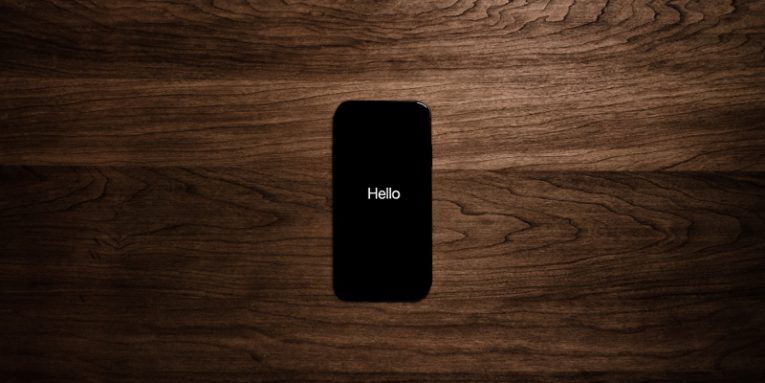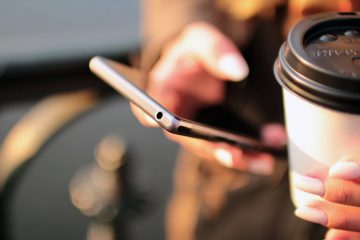Are You Planning on Resetting Your Smartphone? If You Are, Do It the Right Way

There are at least a couple of good reasons why you might need to reset your smartphone back to its factory state. For one, although they are nowhere near as expensive as they used to be, smartphones are still relatively pricey, and people on a budget are sometimes keen to look for a second-hand device. Obviously, if you're going to sell your smartphone to another person, you must make sure that none of your data remains on it, and a factory reset is the only surefire way of doing that.
There's the performance problem as well. Smartphones, like computers, have a finite amount of hardware resources, and the more applications you ask them to run, the more strain you put on them. The fact of the matter is that no matter how careful you are with the apps you install, with time, you will accumulate software that you won't necessarily need in your everyday life. In addition to this, the apps you do use regularly will pick up some clutter that will eventually slow your phone down.
There are plenty of system optimization apps that promise to clear up most of the unwanted stuff, but it's difficult to say which ones are trustworthy. And although you can go through all the installed applications and remove the ones you don't want manually, this will be a laborious process, especially if you have a large number of apps.
With a factory reset, your phone will be back to the state it was in when you picked it up from the store, and we're pretty sure that for some, this is an appealing concept. There are a few things you should bear in mind, though, and today, we'll try to give you some tips that will hopefully help you achieve the results you're after.
Table of Contents
Take your time
Resetting your phone back to its out-of-the-box state might be faster than manually deleting data and reverting settings, but it's a process that can't (and shouldn't) be rushed. The time your phone needs to complete the reset depends largely on its hardware and on the amount of data it needs to remove. Bear in mind, however, that this is a very resource-intensive task, so if you don't have a charger near you, you need to make sure that your battery is topped up before you start. If your phone runs out of juice during the factory reset process, the damage could be serious, so don't take any chances.
You also shouldn't forget that if you plan on using the phone after the reset, you'll need some time to reinstall your apps, log into your accounts, and modify the settings so that the device looks and feels the way you want it to.
More importantly, however, you must make sure that you've spent enough time preparing for the reset. You might have already guessed what your main priority should be.
Backup your data
Your smartphone is full of your personal information. Everything from photos, to music, contacts, and even work documents could be stored on this small device, and, as the multiple warnings will tell you, if you reset it back to its factory settings, all that data will be deleted. A factory reset is an irreversible process. If you do it and you haven't backed up your information, you will lose it.
Most smartphones come with built-in backup solutions and software that can create a copy of your data when you connect the device to your computer. Be sure to check out how this software works. Poke through as many of the options as possible and ensure that you are fully aware of what will be backed up and what will remain on the phone. If necessary, run the utility more than once with different settings in order to ensure that all the data is securely backed up.
Double-check your backups
The backup tools smartphone vendors ship usually do their job well enough, but it still pays to ensure that every single bit of data that you plan on restoring after the reset is available. When it comes to photos and videos, there are a number of applications that automatically send everything you record with your camera to a cloud storage account. Make sure that all files have been correctly synced before you proceed with the reset. The same goes for the data you keep with services like Dropbox, Google Drive, and iCloud. Sometimes, a simple connection glitch could stop the synchronization, and as a result, you might end up losing quite a lot of work.
Make sure that your contacts are not left behind as well. Once again, both Android and iOS offer solutions for the seamless synchronization of your address book, but this doesn't mean that you shouldn't make sure that everything is where it should be. For the more old-fashioned among you copying the contacts to your SIM card should do the trick, though this does mean that you can lose them if you misplace your card or phone.
In this day and age, multimedia is mostly served through streaming platforms, but if you still have MP3 and video files on your phone, you must make sure that they're as safe as the rest of your data. Once again, cloud storage services could help, though it's often easier (and sometimes cheaper) to save the files on an SD card. Just make sure that any external storage devices are removed before you continue with the factory reset. Otherwise, you might end up wiping the data from them as well.
Triple-check your backups
Ensuring that you can restore the data from your backup is just as important as making sure that it's backed up in the first place. As we mentioned already, there is no way of retrieving any deleted information after you've reset your phone which means that you must be sure that once the reset is complete, you'll be able to get everything back to where it belongs. Indeed, cloud backups rarely go wrong these days, but it still pays to be extra cautious.
To avoid unpleasant surprises, you should also do some reading and see what sort of state your files will be kept in. Google Photos, for example, has the option for syncing your files either in their original quality or what Google calls "High quality". If you pick the second option, videos with a resolution higher than 1080p and photos that are larger than 16MP will be compressed, leading to potential loss of quality come restore time.
If you use hardware devices to restore your information, checking to ensure that the data is not corrupt in any way is doubly important. Once you are sure that your files are fully restorable, you can proceed with the reset.
How to factory reset a smartphone?
With thousands of makes and models running different versions of Google's mobile operating system, it's difficult to put together a step-by-step guide that would work for all Android phones. Nevertheless, the factory reset option is most likely somewhere in the System section of Android's Settings app.
Since most iOS users run the latest version of Apple's OS, guiding them through the process is a bit easier. The factory reset option on iPhones and iPads is located in Settings>General>Reset.
Both Android and iOS will tell you that factory resetting the device will wipe all the data on it, and both will ask you if you're sure that you want to proceed. Both Android and iOS will require authentication before the process starts as well.
A phone that's been factory reset recently is bound to perform better, and if you're planning on selling the device, resetting it beforehand is absolutely mandatory. The process itself isn't too difficult, but you must make sure that you've done enough to ensure that it doesn't result in data loss.








